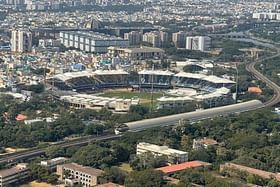The Chennai Metropolitan Area will see the development of new flyovers and improved traffic junctions as the Greater Chennai Corporation (GCC) and various other agencies plan to implement an updated comprehensive mobility plan (CMP).
During a stakeholders’ consultation organised by the Chennai Unified Metropolitan Transport Authority (CUMTA) on 22 June 2023, civic officials announced that the updated comprehensive mobility plan will be ready by June 2024.
Chennai Metropolitan Area
With over fifteen million inhabitants, Chennai is one of the main economic hubs of southern India and the fourth most populous metropolitan region in the country.
In terms of area, CMA is the third largest metropolitan region in the country after the Delhi NCR region and Mumbai Metropolitan Area. The city is 70 per cent of the London Metropolitan Area.
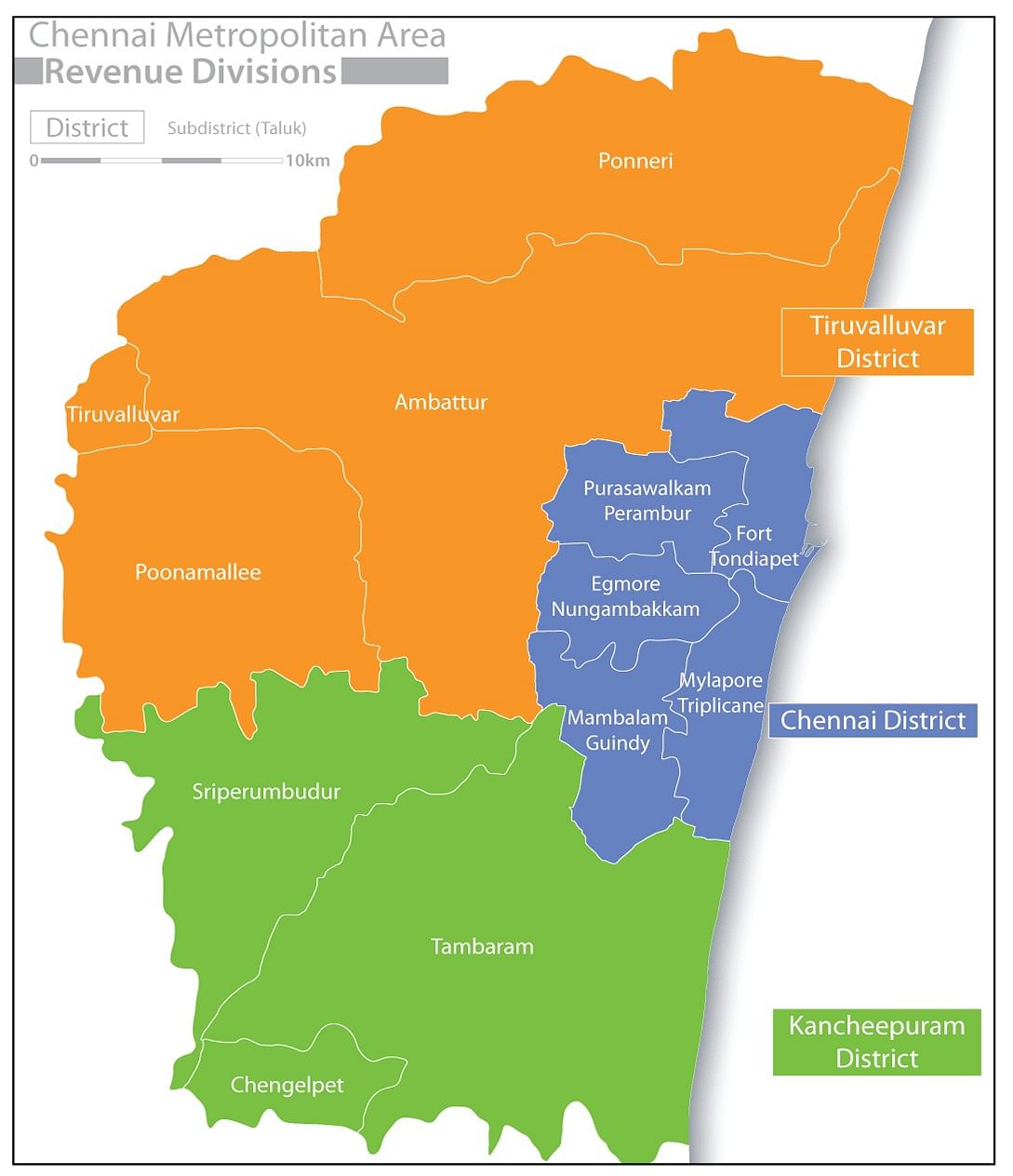
Comprehensive mobility plan (CMP)
The comprehensive mobility plan aims to address all people’s mobility needs and the infrastructure required for all modes, as well as to integrate both land use (i.e., the geographical distribution of activities) and transportation systems.
It is SYSTRA’s teams in India and France who are updating the mobility plan for the metropolis on behalf of the CUMTA.
The aim of the project is to present a long-term vision of mobility in the entire Chennai metropolitan area, covering all modes of transport and focusing on the movement of people rather than vehicles.
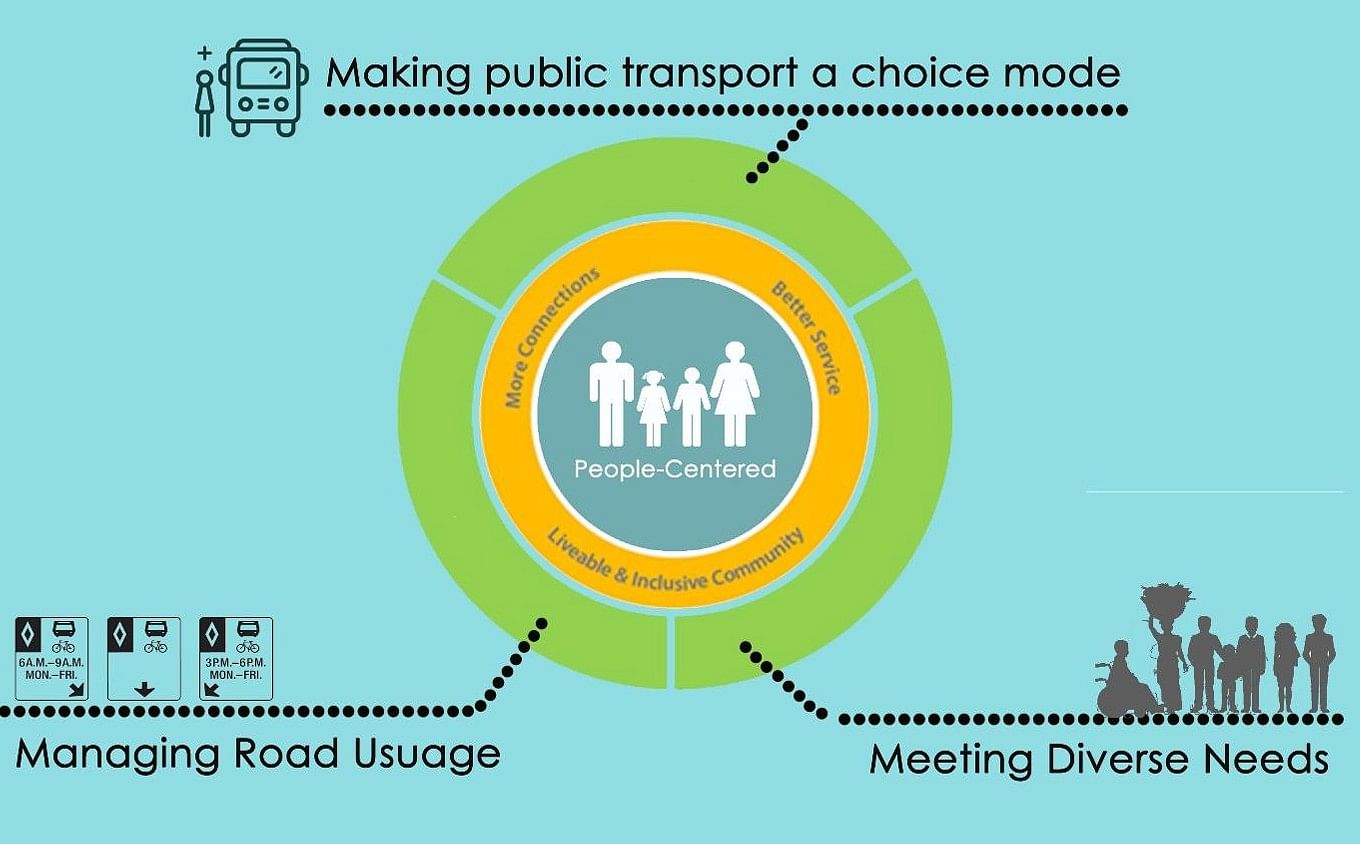
An official stated that the plan will involve surveying over 50,000 households to identify areas for improvement in junctions and bridges.
The plan will also focus on growth corridors, and the alignment for the third phase of the Chennai Metro rail will be finalised based on the updated comprehensive mobility plan.
Additionally, a new MTC bus terminus will be developed based on the plan.
CUMTA special officer I Jeyakumar explained that the comprehensive mobility plan will cover areas in the districts of Chennai, Kancheepuram, Chengalpattu, Tiruvallur, and Ranipet.
The updated plan in 2024 will differ from the 2018 plan as it will cover a larger area of 5,904 sq km, compared to the previous 1,189 sq km, spanning five districts. Post-Covid-19 pandemic, Jeyakumar stated that the traffic scenario has undergone a change.
He added that a consultant has been appointed to plan for the entire area covering Ranipet, Arakkonam, Mamallapuram, Minjur, and Gummidipoondi.
The updated plan is for 25 years and will last up to 2048.
Jeyakumar further mentioned that the mobility plan will be ready before the Third Master Plan. This plan is a base document for planning, which is used by the GCC, traffic police, and other agencies to reduce road congestion in the city.
“The city has to necessarily expand to the west and the south. The plan will identify growth corridors. Many ideas were discussed. Five collectorates participated. Parking issues were discussed. Traffic police stressed on junction improvement,” added Jeyakumar, reports The Hindu.
Key Challenges in Existing Transport Systems
Lack of land use and transport integration: Transport infrastructure projects did not keep pace with land use development. Inadequate transport connectivity in areas with high employment generation.
Lack of Non-Motorised Transport (NMT) facilities: 95 per cent of roads lack footpath infrastructure. Safety concerns and increased reliance on motorised transport. Decreased share of non-motorised transport trips.
Parking policy: High demand for organised parking in central business and commercial areas. Acute shortage of parking supply in key locations. Average parking duration is less than one hour. Requirement for adequate parking supply and regulated unauthorised parking.
Lack of demand management measures: Due to increased supply in public transport sector, optimising resource utilisation is crucial.
Insufficient intermodal integration: Lack of integration in route, operation, service, and institutional aspects of extensive public transport network with different modes.
Lack of Technological Integration
The city lacks adequate IT facilities. The single ticketing system (AFC) across different modes, Passenger Information Systems (PIS) etc., can improve the Public Transport share and user convenience.
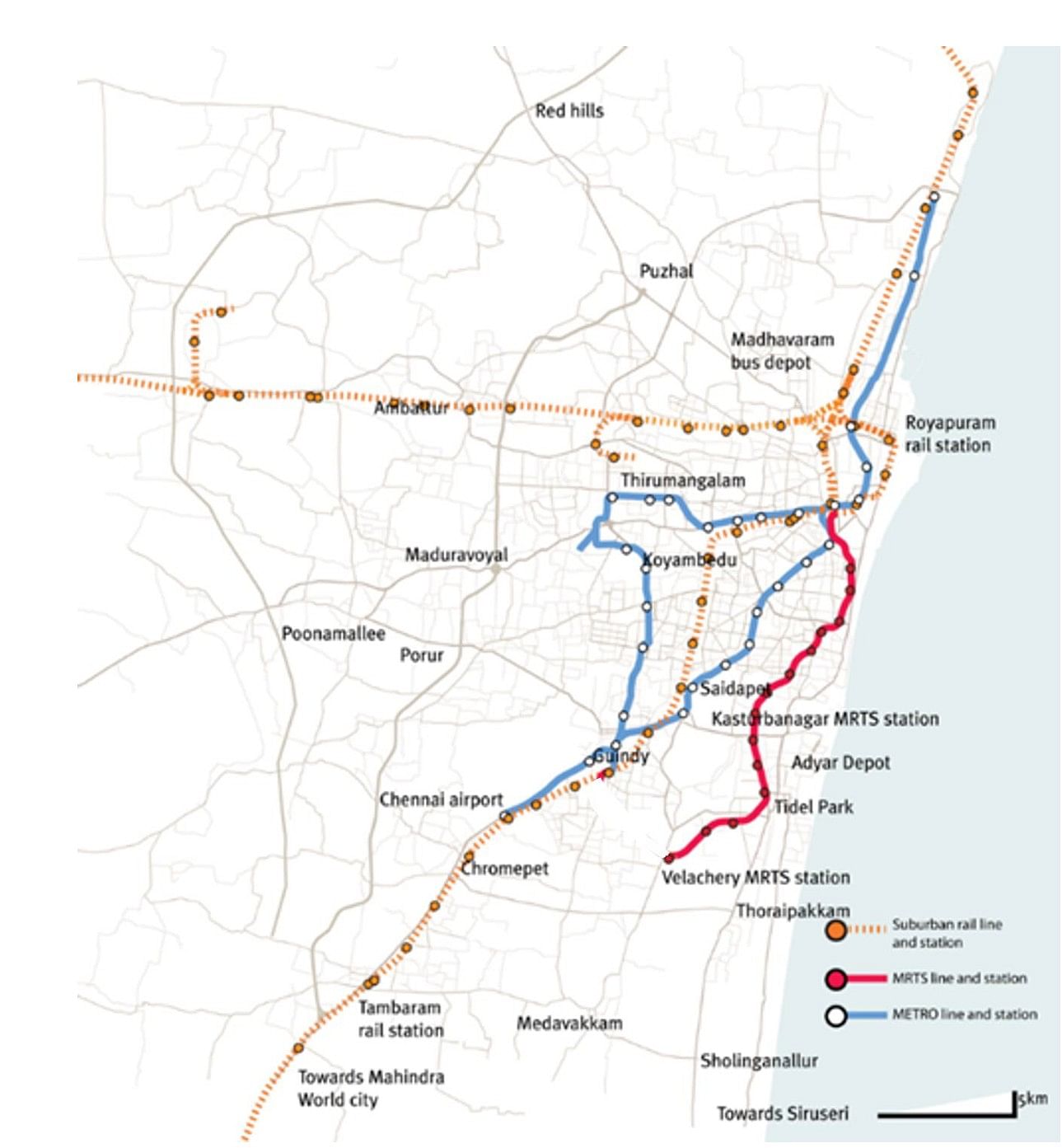
Promoting Sustainable Urban Transport in Chennai: Strategies for Implementation
As per Ministry of Housing and Urban Affairs guidelines, a sustainable scenario has to be considered to reduce congestion and pollution, while conserving resources like urban space and capital expenditure.
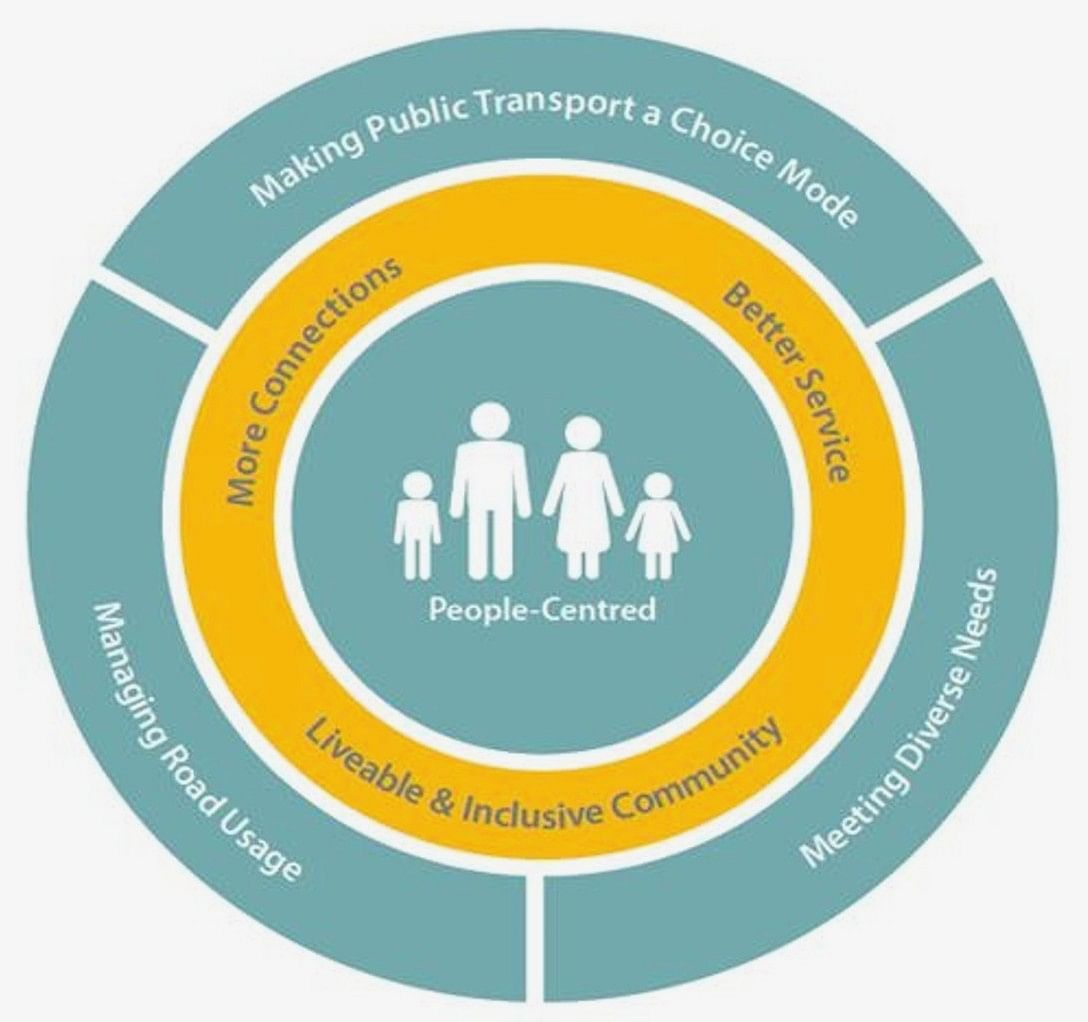
Promote Integration and Inter-modality: Seamless integration and coordination between different modes of transportation, enabling easy transfers and multi-modal journeys, to provide convenient and efficient travel options for commuters.
Enhance Public Transit Systems: Development and improvement of well-connected and efficient public transit networks, such as buses, trams, light rail, and metro systems, to provide affordable and reliable transportation options for residents.
Improve Active Transportation Infrastructure: Provision of safe and accessible infrastructure for pedestrians and cyclists, including sidewalks, footpaths, bike lanes, and bike-sharing programs, to encourage active modes of transportation and reduce motorised travel.
Develop Transit-Oriented Development (TOD): Integration of land use and transport planning, with a focus on locating residential, commercial, and recreational areas in close proximity to public transit hubs, promoting walkability and reducing the need for long-distance commuting.
Implementation of Intelligent Transportation Systems (ITS): Implementation of advanced technologies, such as real-time traffic monitoring, smart traffic signals, and traveler information systems, to improve traffic flow, reduce congestion, and enhance overall transportation efficiency.
Low-Emission Vehicles: Promotion of low-emission and zero-emission vehicles, including electric and hybrid vehicles, to reduce air pollution and greenhouse gas emissions from the transportation sector.
Demand Management Strategies: Implementation of strategies to manage travel demand, such as congestion pricing, parking management, and flexible work hours, to reduce peak-hour traffic congestion and encourage sustainable travel behaviour.
Community Engagement and Participation: Involvement of local communities, stakeholders, and residents in the transportation planning process to ensure their needs and preferences are considered and to foster a sense of ownership and support for sustainable transport initiatives.
By adopting these Chennai can have transportation systems that are environmentally friendly, socially inclusive, economically viable, and contribute to overall urban sustainability.


